 HDF5 is a unique technology suite that makes possible the management of extremely large and complex data collections. The HDF5 technology suite includes: A versatile data model that can represent very complex data objects and a wide variety of metadata. A completely portable file format with no limit on the number or size of data objects in the collection. A software library that runs on a range of computational platforms, from laptops to massively parallel systems, and implements a high-level
HDF5 is a unique technology suite that makes possible the management of extremely large and complex data collections. The HDF5 technology suite includes: A versatile data model that can represent very complex data objects and a wide variety of metadata. A completely portable file format with no limit on the number or size of data objects in the collection. A software library that runs on a range of computational platforms, from laptops to massively parallel systems, and implements a high-level
 Part-DB is an open source inventory managment system with a focus on electronic components. It allows you to keep track of your inventory and locate it easily. It supports multiple users with different permissions and is therefore useful for personal use, for hackerspaces/makerspaces, universities and small companies. Part-DB runs on your server and only needs a web browser for access, so you can access your inventory from everywhere you want, no matter if you are on a PC, a tablet or your smart
Part-DB is an open source inventory managment system with a focus on electronic components. It allows you to keep track of your inventory and locate it easily. It supports multiple users with different permissions and is therefore useful for personal use, for hackerspaces/makerspaces, universities and small companies. Part-DB runs on your server and only needs a web browser for access, so you can access your inventory from everywhere you want, no matter if you are on a PC, a tablet or your smart
 The Visualization Toolkit (VTK) is open source software for manipulating and displaying scientific data. It comes with state-of-the-art tools for 3D rendering, a suite of widgets for 3D interaction, and extensive 2D plotting capability. VTK is part of Kitware’s collection of supported platforms for software development. The platform is used worldwide in commercial applications, as well as in research and development.
The Visualization Toolkit (VTK) is open source software for manipulating and displaying scientific data. It comes with state-of-the-art tools for 3D rendering, a suite of widgets for 3D interaction, and extensive 2D plotting capability. VTK is part of Kitware’s collection of supported platforms for software development. The platform is used worldwide in commercial applications, as well as in research and development.
 Spyder is a powerful scientific environment written in Python, for Python, and designed by and for scientists, engineers and data analysts. It offers a unique combination of the advanced editing, analysis, debugging, and profiling functionality of a comprehensive development tool with the data exploration, interactive execution, deep inspection, and beautiful visualization capabilities of a scientific package. Beyond its many built-in features, its abilities can be extended even further via its
Spyder is a powerful scientific environment written in Python, for Python, and designed by and for scientists, engineers and data analysts. It offers a unique combination of the advanced editing, analysis, debugging, and profiling functionality of a comprehensive development tool with the data exploration, interactive execution, deep inspection, and beautiful visualization capabilities of a scientific package. Beyond its many built-in features, its abilities can be extended even further via its
 Bokeh is an interactive visualization library for modern web browsers. It provides elegant, concise construction of versatile graphics, and affords high-performance interactivity over large or streaming datasets. Bokeh can help anyone who would like to quickly and easily make interactive plots, dashboards, and data applications.
Bokeh is an interactive visualization library for modern web browsers. It provides elegant, concise construction of versatile graphics, and affords high-performance interactivity over large or streaming datasets. Bokeh can help anyone who would like to quickly and easily make interactive plots, dashboards, and data applications.
 Hardinfo2 offers System Information and Benchmark for Linux Systems. It is able to show hardware and basic software information. It can benchmark your system and compare to other machines online. You can find info like: cpu speed, gpu and graphics speed, benchmarks of internal network speed, Linux hw drivers and modules loaded. sysinfo like which development tools are installed, memory dmi and spd information, distro / os informations, hwinfo about your components like pcie and usb.
Hardinfo2 offers System Information and Benchmark for Linux Systems. It is able to show hardware and basic software information. It can benchmark your system and compare to other machines online. You can find info like: cpu speed, gpu and graphics speed, benchmarks of internal network speed, Linux hw drivers and modules loaded. sysinfo like which development tools are installed, memory dmi and spd information, distro / os informations, hwinfo about your components like pcie and usb.
 theKernel is an infrastructure that link a library-item with a Target-Programming-Language (TPL) using the Programming-Language-Micro-Kernel (PLMK) object-interface. The goal is a programming language independent interface between a C library and a target language. Philosophy Write Once → Run Everywhere > The library-item is a c-api for a library available as c-header-file. > The library-item is mapped into a Target-Programming-Language (TPL) using a language that is supported by the Programmi
theKernel is an infrastructure that link a library-item with a Target-Programming-Language (TPL) using the Programming-Language-Micro-Kernel (PLMK) object-interface. The goal is a programming language independent interface between a C library and a target language. Philosophy Write Once → Run Everywhere > The library-item is a c-api for a library available as c-header-file. > The library-item is mapped into a Target-Programming-Language (TPL) using a language that is supported by the Programmi
 CXXGraph is a comprehensive C++ library that manages graph algorithms. This header-only library serves as an alternative to the Boost Graph Library (BGL).
CXXGraph is a comprehensive C++ library that manages graph algorithms. This header-only library serves as an alternative to the Boost Graph Library (BGL).
 GNU PSPP is a program for statistical analysis of sampled data. It is a Free replacement for the proprietary program SPSS, and appears very similar to it with a few exceptions.
GNU PSPP is a program for statistical analysis of sampled data. It is a Free replacement for the proprietary program SPSS, and appears very similar to it with a few exceptions.
 CalculiX is a free and open-source finite-element analysis application that uses an input format similar to Abaqus. It has an implicit and explicit solver (CCX) written by Guido Dhondt and a pre- and post-processor (CGX) written by Klaus Wittig.[1] The original software was written for the Linux[2] operating system. Convergent Mechanical has ported the application to the Windows operating system.[3] The pre-processor component of CalculiX can generate grid data for the computational fluid dynam
CalculiX is a free and open-source finite-element analysis application that uses an input format similar to Abaqus. It has an implicit and explicit solver (CCX) written by Guido Dhondt and a pre- and post-processor (CGX) written by Klaus Wittig.[1] The original software was written for the Linux[2] operating system. Convergent Mechanical has ported the application to the Windows operating system.[3] The pre-processor component of CalculiX can generate grid data for the computational fluid dynam
 CalculiX is a free and open-source finite-element analysis application that uses an input format similar to Abaqus. It has an implicit and explicit solver (CCX) written by Guido Dhondt and a pre- and post-processor (CGX) written by Klaus Wittig.[1] The original software was written for the Linux[2] operating system. Convergent Mechanical has ported the application to the Windows operating system.[3] The pre-processor component of CalculiX can generate grid data for the computational fluid dynam
CalculiX is a free and open-source finite-element analysis application that uses an input format similar to Abaqus. It has an implicit and explicit solver (CCX) written by Guido Dhondt and a pre- and post-processor (CGX) written by Klaus Wittig.[1] The original software was written for the Linux[2] operating system. Convergent Mechanical has ported the application to the Windows operating system.[3] The pre-processor component of CalculiX can generate grid data for the computational fluid dynam
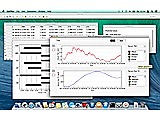 SimThyr is a continuous simulation program for pituitary-thyroid feedback control. It is based on a published parametrically isomorphic model of thyroid homeostasis. Applications of this program cover research, including development of hypotheses, and education of students in biology and medicine, nurses, and patients.
SimThyr is a continuous simulation program for pituitary-thyroid feedback control. It is based on a published parametrically isomorphic model of thyroid homeostasis. Applications of this program cover research, including development of hypotheses, and education of students in biology and medicine, nurses, and patients.
 emgr - the EMpirical GRamian framework is a compact open-source model reduction software toolbox for data-driven control engineering. It is compatible with OCTAVE or MATLAB.
emgr - the EMpirical GRamian framework is a compact open-source model reduction software toolbox for data-driven control engineering. It is compatible with OCTAVE or MATLAB.
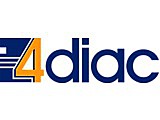 The general aim of the 4DIAC initiative is to provide an open, free, IEC 61499 standard compliant automation and control environment. The following open source projects are in the focus of the 4DIAC initiative: * FORTE (4DIAC-RTE): Modular IEC 61499 compliant Runtime Environment for small embedded devices (16/32 Bit), implemented in C++ * 4DIAC-IDE: Modular IEC 61499 compliant Integrated Engineering Environment based on the Eclipse open tool framework * 4DIAC-LIB: Library of function block
The general aim of the 4DIAC initiative is to provide an open, free, IEC 61499 standard compliant automation and control environment. The following open source projects are in the focus of the 4DIAC initiative: * FORTE (4DIAC-RTE): Modular IEC 61499 compliant Runtime Environment for small embedded devices (16/32 Bit), implemented in C++ * 4DIAC-IDE: Modular IEC 61499 compliant Integrated Engineering Environment based on the Eclipse open tool framework * 4DIAC-LIB: Library of function block
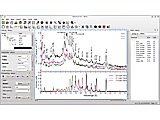 Veusz is a scientific plotting package, designed to create publication-ready Postscript, PDF, or SVG output. It features an easy to use graphical interface as well as a command line interface and can be scripted or embedded in Python scripts. Graphs are constructed in a modular fashion from separate components. Datasets can be interactively modified or created from within the program.
Veusz is a scientific plotting package, designed to create publication-ready Postscript, PDF, or SVG output. It features an easy to use graphical interface as well as a command line interface and can be scripted or embedded in Python scripts. Graphs are constructed in a modular fashion from separate components. Datasets can be interactively modified or created from within the program.
 SLEEF implements vectorized versions of all C99 real floating point math functions. It can utilize SIMD instructions of modern processors. SLEEF is designed to fully utilize SIMD computation by reducing the use of conditional branches and scatter/gather memory access. Our benchmarks show that the performance of SLEEF is comparable to that of the best commercial library.
SLEEF implements vectorized versions of all C99 real floating point math functions. It can utilize SIMD instructions of modern processors. SLEEF is designed to fully utilize SIMD computation by reducing the use of conditional branches and scatter/gather memory access. Our benchmarks show that the performance of SLEEF is comparable to that of the best commercial library.
 CalculiX is a free and open-source finite-element analysis application that uses an input format similar to Abaqus. It has an implicit and explicit solver (CCX) written by Guido Dhondt and a pre- and post-processor (CGX) written by Klaus Wittig.[1] The original software was written for the Linux[2] operating system. Convergent Mechanical has ported the application to the Windows operating system.[3] The pre-processor component of CalculiX can generate grid data for the computational fluid dynam
CalculiX is a free and open-source finite-element analysis application that uses an input format similar to Abaqus. It has an implicit and explicit solver (CCX) written by Guido Dhondt and a pre- and post-processor (CGX) written by Klaus Wittig.[1] The original software was written for the Linux[2] operating system. Convergent Mechanical has ported the application to the Windows operating system.[3] The pre-processor component of CalculiX can generate grid data for the computational fluid dynam
 ClickMaster2000 is a simple tally counter for images. You can load images containing objects that need to be counted, click on each one of them, and then read the total without having to keep mental record. ClickMaster2000 is geared for batch, precise counting on dense images where automated recognition is not easily possible. ClickMaster2000 was originally designed for microbiology imagery.
ClickMaster2000 is a simple tally counter for images. You can load images containing objects that need to be counted, click on each one of them, and then read the total without having to keep mental record. ClickMaster2000 is geared for batch, precise counting on dense images where automated recognition is not easily possible. ClickMaster2000 was originally designed for microbiology imagery.
 PUMA's EDFplus engine is an Object Pascal library that supports reading, writing, parsing and composing multichannel biological and physical signals in the European Data Format (EDF) or its successor EDF+.
PUMA's EDFplus engine is an Object Pascal library that supports reading, writing, parsing and composing multichannel biological and physical signals in the European Data Format (EDF) or its successor EDF+.
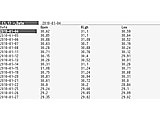 View a CSV file and Python data structures in a curses, spreadsheet-like display.
View a CSV file and Python data structures in a curses, spreadsheet-like display.
 This is a program for real-time rectangle detection from an image. This program detects *ALL* rectangular shapes viewed from a 3D perspective in real time, utilizing a GPU. The program is purely rule-based.
This is a program for real-time rectangle detection from an image. This program detects *ALL* rectangular shapes viewed from a 3D perspective in real time, utilizing a GPU. The program is purely rule-based.
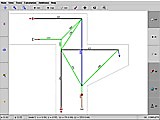 Fachwerk calculates strut-and-tie models used by structural engineers for analysing and designing reinforced concrete structures. The program only uses the equilibrium conditions, thus it is not assuming elastic behaviour.
Fachwerk calculates strut-and-tie models used by structural engineers for analysing and designing reinforced concrete structures. The program only uses the equilibrium conditions, thus it is not assuming elastic behaviour.
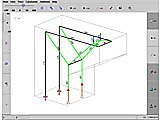 Fachwerk3D calculates three-dimensional strut-and-tie models used by structural engineers for analysing and designing reinforced concrete structures. The program only uses the equilibrium conditions, thus it is not assuming elastic behaviour.
Fachwerk3D calculates three-dimensional strut-and-tie models used by structural engineers for analysing and designing reinforced concrete structures. The program only uses the equilibrium conditions, thus it is not assuming elastic behaviour.
 Briefly, t1ha is a 64-bit Hash Function: 1. Created for 64-bit little-endian platforms, in predominantly for x86_64, but without penalties could runs on any 64-bit CPU. 2. In most cases up to 15% faster than City64, xxHash, mum-hash, metro-hash and all others which are not use specific hardware tricks. 3. Not suitable for cryptography.
Briefly, t1ha is a 64-bit Hash Function: 1. Created for 64-bit little-endian platforms, in predominantly for x86_64, but without penalties could runs on any 64-bit CPU. 2. In most cases up to 15% faster than City64, xxHash, mum-hash, metro-hash and all others which are not use specific hardware tricks. 3. Not suitable for cryptography.
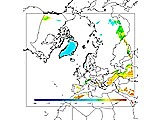 Fimex is a the File Interpolation, Manipulation, and EXtraction library for gridded geospatial data. It converts between different, extensible data formats (currently netcdf, NcML, grib1/2, metgm, wdb, and felt). It enables you to change the projection and interpolation of scalar and vector grids. It makes it possible to subset the gridded data and to extract only parts of the files. The library is written in C/C++ and as extensions to Fortran and R. For simple usage, Fimex also comes with the c
Fimex is a the File Interpolation, Manipulation, and EXtraction library for gridded geospatial data. It converts between different, extensible data formats (currently netcdf, NcML, grib1/2, metgm, wdb, and felt). It enables you to change the projection and interpolation of scalar and vector grids. It makes it possible to subset the gridded data and to extract only parts of the files. The library is written in C/C++ and as extensions to Fortran and R. For simple usage, Fimex also comes with the c
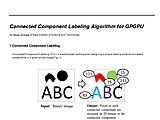 Connected Component Labeling (CCL) is a well known technique for assigning a unique label to each of connected components in a given binary image. In this project, libraries that implement a parallel CCL algorithm that is suitable for execution on GPGPU are provided. In the archive, an implementation in OpenCL and C that is usable in combination with OpenCV library, a single-threaded vectorized CPU implementation that utilizes AVX2 instructions, and a Java implementation that is for helping unde
Connected Component Labeling (CCL) is a well known technique for assigning a unique label to each of connected components in a given binary image. In this project, libraries that implement a parallel CCL algorithm that is suitable for execution on GPGPU are provided. In the archive, an implementation in OpenCL and C that is usable in combination with OpenCV library, a single-threaded vectorized CPU implementation that utilizes AVX2 instructions, and a Java implementation that is for helping unde
 LibreIdea is a data base of research questions and ideas written, improved and evaluated collaboratively by anyone. LibreIdea aims to be a specialist of idea's creation and improvement. LibreIdea allows people to gather around projects from community's ideas.
LibreIdea is a data base of research questions and ideas written, improved and evaluated collaboratively by anyone. LibreIdea aims to be a specialist of idea's creation and improvement. LibreIdea allows people to gather around projects from community's ideas.
 facedetect is a simple face detector for batch processing. It answers the basic question: "Is there a face in this image?" and gives back either an exit code or the coordinates of each detected face in the standard output. The aim is to provide a basic command-line interface that's consistent and easy to use with software such as ImageMagick, while progressively improving the detection algorithm over time.
facedetect is a simple face detector for batch processing. It answers the basic question: "Is there a face in this image?" and gives back either an exit code or the coordinates of each detected face in the standard output. The aim is to provide a basic command-line interface that's consistent and easy to use with software such as ImageMagick, while progressively improving the detection algorithm over time.
 Armadillo is a C++ linear algebra library (matrix maths) aiming towards a good balance between speed and ease of use. The API is deliberately similar to Matlab. Provides efficient classes for vectors, matrices and cubes, as well as many functions which operate on the classes (eg. contiguous and non-contiguous submatrix views). Integer, floating point, and complex numbers are supported, as well as a subset of trigonometric and statistics functions. Various matrix decompositions are provided
Armadillo is a C++ linear algebra library (matrix maths) aiming towards a good balance between speed and ease of use. The API is deliberately similar to Matlab. Provides efficient classes for vectors, matrices and cubes, as well as many functions which operate on the classes (eg. contiguous and non-contiguous submatrix views). Integer, floating point, and complex numbers are supported, as well as a subset of trigonometric and statistics functions. Various matrix decompositions are provided
|